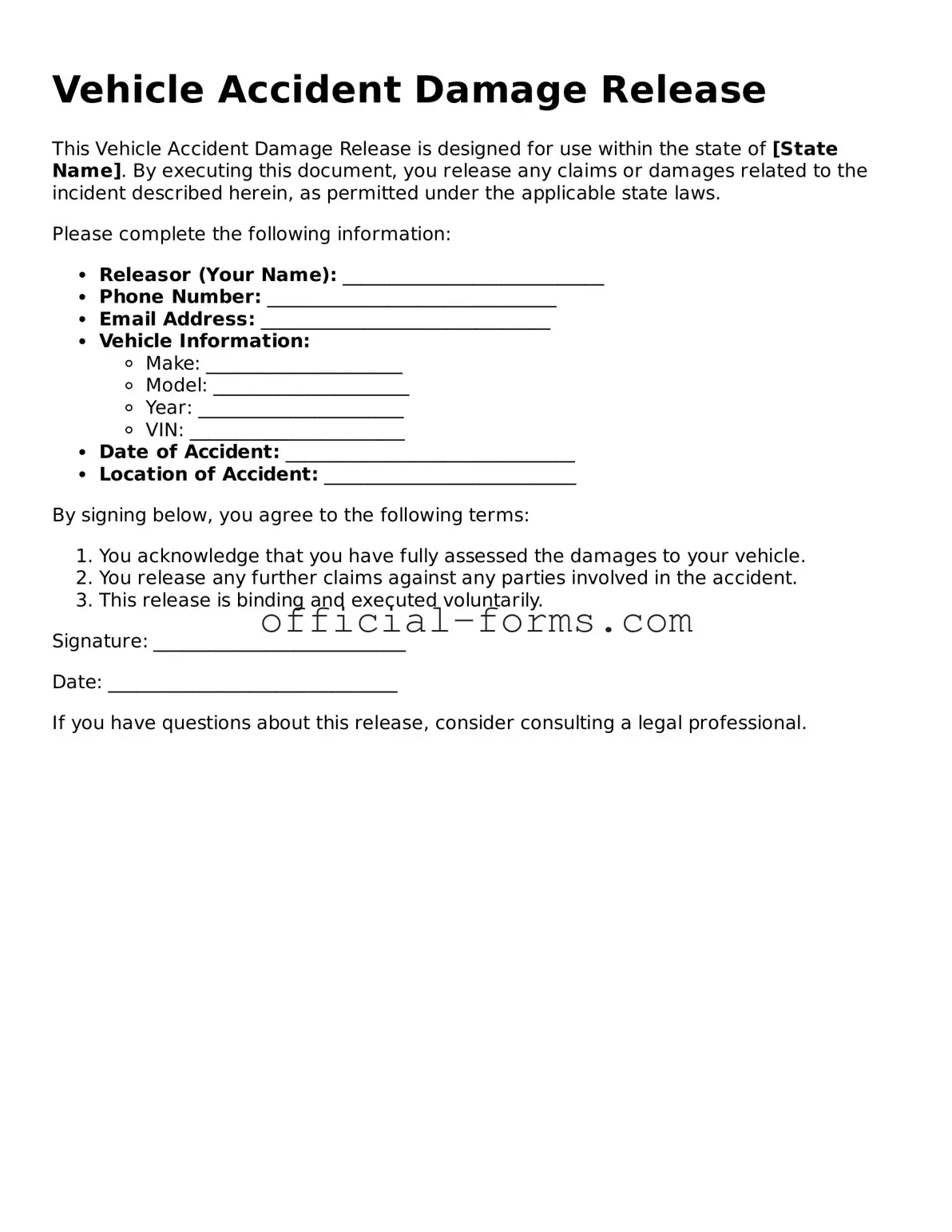Completing a Vehicle Accident Damage Release form can be straightforward, but many individuals make common mistakes that can lead to complications. One frequent error is failing to provide accurate vehicle information. This includes details such as the make, model, and year of the vehicle involved in the accident. Inaccurate information can delay processing and may lead to disputes.
Another common mistake is neglecting to include all relevant parties involved in the accident. It is essential to list every individual who was part of the incident, including passengers and other drivers. Omitting someone can affect liability and the resolution of claims.
Many people also overlook the importance of documenting the accident thoroughly. Providing a clear description of the incident, including the circumstances and any contributing factors, is crucial. A vague or incomplete description can hinder the claims process and lead to misunderstandings.
Additionally, individuals often forget to sign and date the form. A missing signature can render the form invalid, resulting in delays or the need to resubmit the paperwork. It is important to double-check that all required fields are completed before submission.
Providing incorrect contact information is another mistake that can create problems. Ensure that phone numbers and addresses are accurate. If the insurance company or other parties cannot reach you, it may complicate the resolution of the claim.
Some individuals may rush through the form, leading to errors in the reported damages. It is vital to carefully assess and list all damages to the vehicle. Failing to do so can result in insufficient compensation for repairs.
Another issue arises when individuals do not read the form carefully. Understanding the terms and conditions of the release is important. Misinterpretation can lead to unintended consequences, such as waiving rights to further claims.
Lastly, not keeping a copy of the completed form can be a significant oversight. Retaining a copy for personal records ensures that you have documentation of what was submitted. This can be important for future reference or if any disputes arise later.
